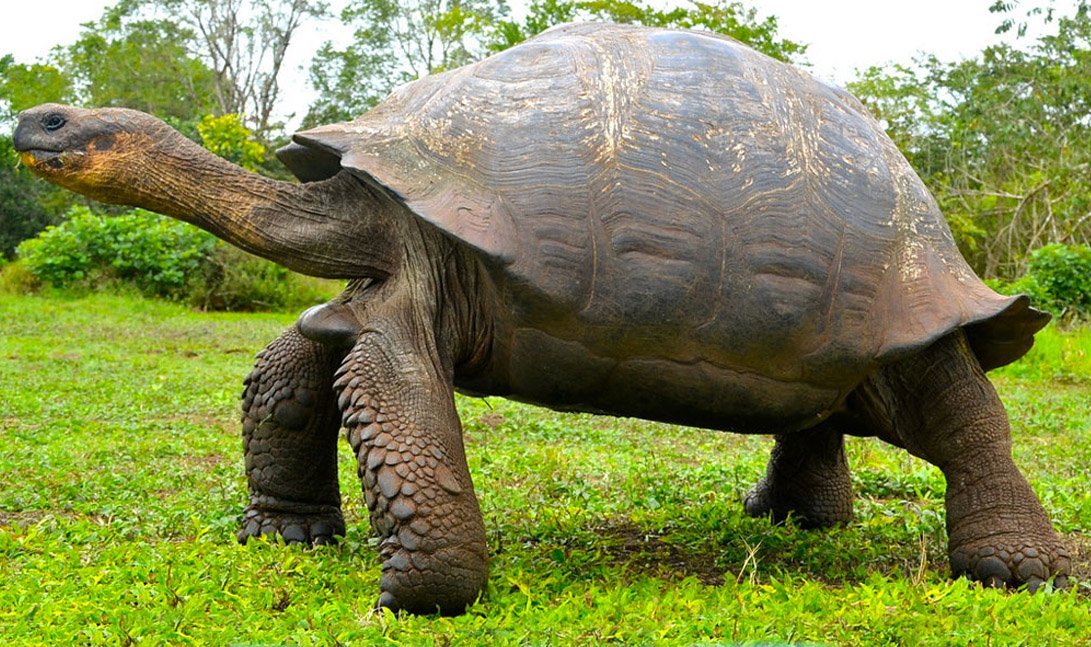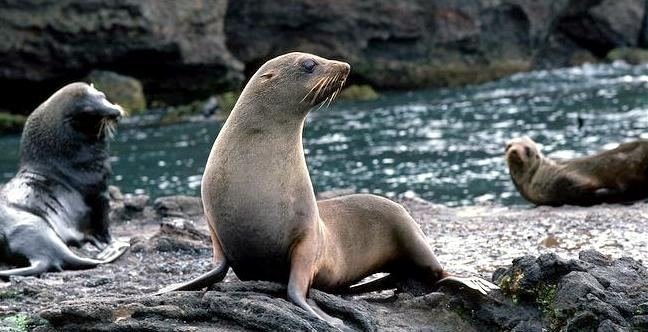5 Iconic Animals of the Galapagos Islands
The Galapagos Islands, located roughly 600 miles off the coast of Ecuador, are home to some of the highest levels of endemism (species found nowhere else on earth) anywhere on the planet. About 80% of the land birds you will see, 97% of the reptiles and land mammals, and more than 30% of the plants are endemic. More than 20% of the marine species in Galapagos are found nowhere else on earth.
Many visitors to Galapagos are surprised to be greeted by desert-like vegetation—most are expecting a continuation of the lush greenery they witnessed on mainland Ecuador. In fact, the majority of the archipelago’s land area is covered by the brown and grey vegetation often found in deserts.The Galapagos Islands are formed of lava piles and dotted with shield volcanoes, many of which are periodically active. The striking ruggedness of the arid landscape is accentuated by high volcanic mountains, craters, and cliffs. The islands are situated in the Pacific Dry Belt, and in average years, only the highest altitudes of the larger islands receive enough rainfall to support tropical plant life.
Geologically speaking, the islands are young, and much of the island’s plant life reflects this; many species seem to be in the midst of the evolutionary process, which makes classifying them a difficult task. To date, the Islands are believed to be home to more than 600 native species of vascular plants and approximately 825 introduced species, the majority introduced by humans. More than 100 of the introduced species have become established in the wild, with many of them extremely invasive and of major concern. Three introduced plant species have been eradicated.
Mainland Ecuador, on the other hand, has about 20,000 species. The discrepancy between species number on the islands and the mainland highlights the fact that the Galapagos Islands are separated from the continent by a hostile saltwater barrier reducing the potential for arrival and, once a plant has arrived, establishment is difficult due to the harsh environment. (1)
Source: Andean Discovery
1) Galapagos Giant Tortoise
The giant tortoises of Galapagos are among the most famous of the unique fauna of the Islands. While giant tortoises once thrived on most of the continents of the world, the Galapagos tortoises now represent one of the remaining two groups of giant tortoises in the entire world. The prehistoric-looking Galapagos Tortoise can live over 150 years, and they’ve played an integral role in the history of the Galapagos Islands. They were almost hunted to extinction, with numbers dwindling to around 3,000 in the 1970's. Fortunately, Galapagos Conservation efforts have proven effective, and the tortoise population today has risen to around 20,000.
Size: 5 feet, 550 pounds
Diet: Prickly pear cactus, fruits, flowers, grasses
Source: Latin Trails
Source: National Geographic
2) Galapagos Booby
The Galapagos Islands are home to three of the six species of boobies in the world. Their name comes from the Spanish word “bobo” which translates to clumsy. This was because it referred to the comical way that boobies walk. The three types of boobies on the islands are red-footed booby, blue-footed booby and Nazca booby.
Blue-footed boobies are easily recognized thanks to their bright and colorful turquoise feet. Their very selective diet (consisting of sardines, anchovies, mackerel, and squid) gives them this distinctive hue.
Red-Footed Boobies typically nest in trees and shrubs on the outer-most islands because they prefer to feed far out at sea. They make spectacular dives to prey on small fish or squid spotted on the water’s surface.
Source: Storyteller Traveler
Source: The Verge
3) Galapagos Batfish
Also known as the Red-Lipped Batfish, this unique fish can be found only in the Galapagos Islands, usually at depths of anywhere from 10 to 250 feet. In addition to its red lips, the fish (a terrible swimmer) is known for its ability to “walk” on the ocean floor using its pectoral fins. Once it reaches maturity, the dorsal fin evolves into a single spine-like projection that is primarily used to lure prey, including crustaceans and other small fish.
Source: Ocean Oculus
4) Galapagos Penguin
One of the smaller penguins of the world, they are the only penguins that live at or just above the equator, making them the only penguin species to be found in the Northern Hemisphere. The population of about 2,000 individuals is concentrated in the colder, nutrient-rich waters in the western islands of the Galapagos. They regulate their body temperature by stretching out their flippers, avoiding the sun, panting and swimming in the islands’ cool waters.
Source: Galapagos Insiders
Source: Alchetron
5) Galapagos Fur Seal
Much like the Galapagos Penguin, the fur seals are experts in thermoregulation. Research has shown that these animals sweat if they get too hot, but they can control their body temperature by instinctively regulating the flow of blood to their flippers. Fur seals divide their time on land and in water fairly equally, and you're most likely to spot them on rocks near the water.
Source: Galapagos Conservation Trust
Source: AndBeyond
Source: Voyagers Travel
Sources











